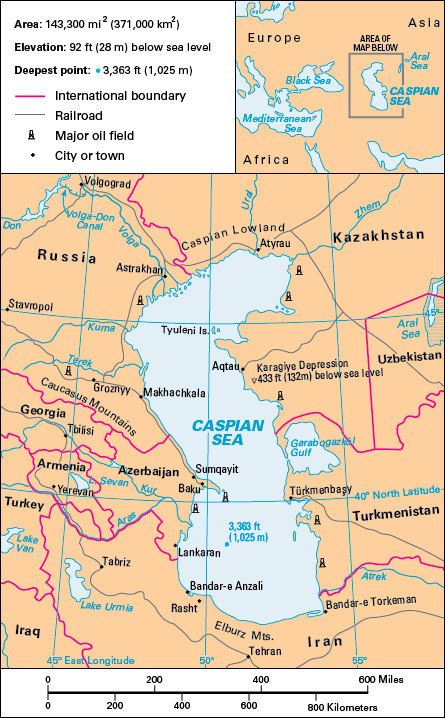Caspian << KAS pee uhn >> Sea, a great salt lake below sea level, is the largest inland body of water in the world. It lies between Europe and Asia east of the Caucasus Mountains. The Caspian Sea is bordered by Kazakhstan on the north and northeast, Turkmenistan on the southeast, Iran on the south, Azerbaijan on the southwest, and Russia on the west and northwest.

The Caspian Sea covers 143,300 square miles (371,000 square kilometers). It is about 750 miles (1,210 kilometers) long at its greatest extent. The water level of the Caspian has varied greatly over the centuries. In 1977, it reached its lowest point in 400 years. Since then, however, the water level has increased steadily. Irrigation projects in the Caspian Basin drain off much water from these rivers. Important rivers that empty into the Caspian include the Volga, Ural, Emba, Terek, and Kur. The Volga-Don Canal links the Caspian Sea to the Black Sea.
The Caspian Sea lies 92 feet (28 meters) below sea level. No natural outlets drain water from the Caspian Sea into any ocean. Caspian waters are less salty than ocean waters and abound with freshwater and saltwater fish. The Caspian Sea has no tides. Dozens of small islands are scattered throughout the lake.
The rivers that flow into the Caspian Sea yield most of the annual Russian harvest of sturgeon. The Caspian Sea is an important source of petroleum and natural gas. Major Caspian ports include Krasnovodsk in Turkmenistan, Bandar-e Torkeman and Bandar-e Anzali in Iran, Baku in Azerbaijan, and Astrakhan and Makhachkala in Russia.
